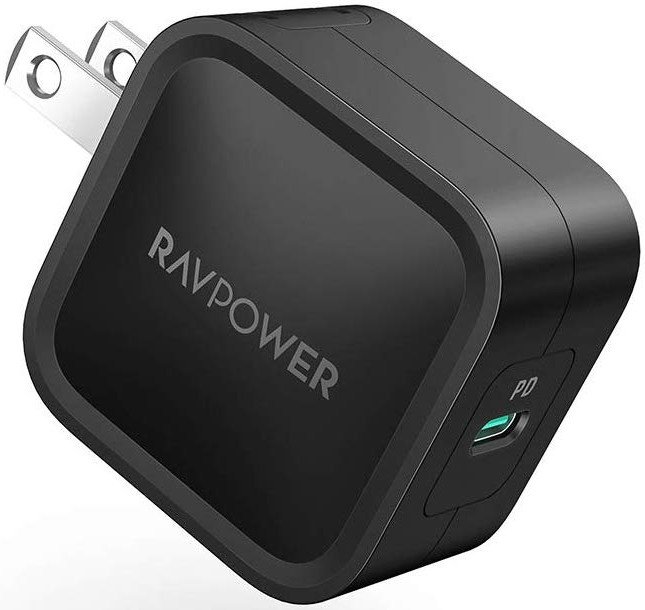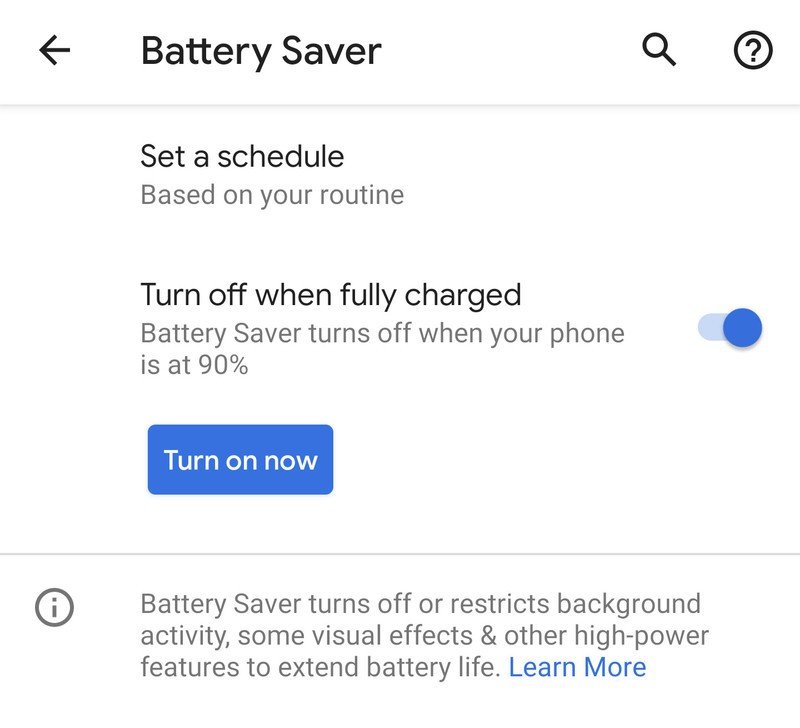How to fix Google Pixel 4 battery problems

To say the Pixel 4 has weak battery life is a drastic understatement. Leaving the phone as it comes out of the box, and using it a typical amount, it isn't going to make it through a full day on a single charge. It's annoying to have to change your usage habits or tweak things just to get a full day, but it is possible to do things to extend the Pixel 4's battery life.
Make sure Adaptive Battery is turned on
This tip is as simple as it gets, and every Pixel owner should make sure it's turned on: Adaptive Battery.
Go into your phone's Settings, Battery, Adaptive Battery and make sure the toggle is turned on. After that, there's nothing else to do. Adaptive Battery is a system that looks at how you use your phone, and limits how often infrequently-used apps can run in the background. Google says this only gets better over time as well.
After you've used your phone for a while with Adaptive Battery turned on, it will start to list the apps that it has "restricted" from running as frequently. They'll show up in the Adaptive Battery settings, and you can see how long they've been restricted for and have the option to whitelist those apps if you so choose. For example you may not use a travel-related app that often, but when you are traveling you want it to be able to run as often as it needs — this is where you'll check to make sure it's able to run.
Use Battery Saver mode
This is pretty self-explanatory: turn on Battery Saver. You can toggle it on at any time from the notification shade, and when you do the phone makes a bunch of battery-saving changes. With Battery Saver on, the phone restricts apps from refreshing in the background, turns off location services when the screen is off, turns off "OK Google" hotword detection, and turns on the system's dark theme. All together, it can make a big difference in battery usage — although it also has a big effect on how your phone works.
If you (understandably) don't want to have Battery Saver turned on all the time, you can set it to turn on automatically at a specific battery percentage. By default that number is 15%, but you can set it anywhere between 5% and 75%.
There's also an interesting middle ground that's a hands-off experience: letting the phone choose when to turn on Battery Saver. There's an option in the Battery Saver settings to let it turn on "based on your routine" — basically the phone will look at how long you usually use your phone, and when it gets plugged in at night, and determine whether Battery Saver should be turned on earlier in the day in order for you to make it there. Google's battery life estimates are usually pretty good, so having Battery Saver come on automatically when the system sees heavier-than-usual usage could be very helpful.
Get the latest news from Android Central, your trusted companion in the world of Android
Uninstall unused apps
Using Battery Saver to restrict background app usage is one thing, but the best thing you can do is not have a bunch of apps on your phone you're not using in the first place. Google does an okay job with restricting battery usage through Adaptive Battery, but you can take it all into your own hands by uninstalling apps you know you're not using.
Scroll through your app drawer and ask yourself when the last time was you actually cared to have some of the apps ... and when you expect to realistically use them again. Remember, you can always re-install apps from the Play Store — all of the apps you've installed stay in your "library" on the Play Store, so you can go back and find them later.
Restrict background location access
Android 10 has a great new permission management system that lets you restrict whether apps have access to your phone's location ... but rather than making it just all on or all off, you can choose a new middle setting of only giving location while the app is being used. This is obviously a boon for privacy, because honestly most apps just shouldn't have access to your location, and you should have control over that.
But fewer apps getting access to your location in the background is also a battery saver. Android does a good job of coalescing location requests, but still, every time your phone gets your location in the background and apps wake up to access it it drains a little battery.
Head into Settings, Privacy, Permission manager and then Location to see a list of every app that has access to your location. Chances are most of your apps have full location access, even when the app isn't actively being used — you can tap into each app and change to "Allow only while using the app" if you want to restrict its access. If there's an app you feel shouldn't ever have your location, you can deny it entirely.
There's a chance that some apps may not behave properly if you deny their location access, and it could be in ways you didn't expect. But for the most part, apps can handle this restriction just fine, and in return you get the peace of mind of knowing they can't see where you are — and you can save some battery in the process.
Charge faster, charge easier
Ultimately, no matter what you do the Pixel 4 has a really small battery and it's going to need to be charged more often than other phones. The least you can do is make it more convenient to charge throughout the day, and make that charging faster when you do. That means making sure you have a good full-speed wall charger, a wireless charger, a car charger (if you drive), and a portable battery.

RAVPower 30W USB-C PD 3.0 wall charger ($24 at Amazon)
RAVPower's 30W USB-C PD wall plug is just as effective as the in-box charger at charging up your Pixel, but is even powerful enough to top up tablets and even small laptops when needed. It's also cheaper than buying a second charger from Google.

Anker PowerPort Qi Charging Pad ($30 at Amazon)
This affordable 10W fast wireless charging pad is thinner on your desk or nightstand than most chargers on the market. Use it to charge up your Pixel 4at night, or pick it up as a secondary charger for the living room or on your desk at work.

Aukey 39W Car Charger with USB-C PD ($17 at Amazon)
Every time you drive is a perfect opportunity to charge up your phone. You'll want to keep the battery topped up if you're navigating, or add a good bit of power as you drive and keep your hands off of the phone for the entire trip. This'll charge up your Pixel 4 as fast as a wall charger, and charge another phone at the same time.

Aukey 18W USB-C 10,000mAh Power Bank ($33 at Amazon)
This power bank has USB-C PD that can charge up a Pixel 4 as fast as a wall plug, and do it a couple times over. It also has a USB-A port for a second phone if needed. It's also shaped roughly like a phone, so it's easy to slip into a pocket on the go.
Turn off Motion Sense
Motion Sense is the combination of features enabled by Google's new "Soli" radar sensor in the Pixel 4. WIth Motion Sense enabled, your phone is aware of where your hand (and sometimes face) is while it's around the phone, and that creates some neat experiences. But of course, like everything else we've pointed out in this guide, Motion Sense is using up your precious battery.
In Settings, System, Motion Sense you'll see separate settings. The biggest battery saver will be turning off Motion Sense entirely. But of course there are downsides to that decision — the phone won't be able to sense when you're reaching for it, and will be slower to respond to your presence to enable face unlock. You can specifically turn off the "skip songs" and "silence interruptions" options, though, if you find those are triggering accidentally more often than they should — because each time Motion Sense is active, it's using battery.
Change your Ambient Display settings
OLED displays are extremely efficient because they only light up the exact pixels necessary to show the content it needs to show, and that makes the "screen-off" Ambient Display a pretty small drain. But still, it's more drain than the display being completely off, and if you don't find it all that useful anyway you might as well disable it to save a little battery.
Go into Settings, Display, Lock screen display and turn off "Always on." Now this doesn't mean Ambient Display is off entirely — it just means it won't be turned on by default. With every other setting left in its default (and Motion Sense left on), your Ambient Display will still come on when the phone is picked up, when your hand is close to it, and when notifications arrive. Realistically, those are the only times most people need to see their Ambient Display anyway — this is a good middle ground.
If you're purely focused on making your battery last as long as possible, you can turn off the rest of the Ambient Display settings — reach, tap, lift and notifications — so the screen will remain completely off until you press the power button. (Note: Ambient Display is already smart enough to turn off whenever your phone is in a pocket or bag.)
Turn off Smooth Display 90Hz refresh
One of the Pixel 4's best hardware features is its display, which has a 90Hz refresh rate that dramatically smooths out motion on the screen. It's one of those things you wouldn't think you'd like, until you've experienced it and go back to another phone without it. But, there's a cost: refreshing the screen 50% more often than other phones requires more battery, which the Pixel 4 doesn't really have to spare. So if you want to keep your battery lasting a little longer and are willing to give up one of the creature comforts like a 90Hz refresh rate, you can turn off Smooth Display.
The toggle is easy to find. Go into your Settings, Display and Smooth Display — there's a single toggle, and that's it.

Andrew was an Executive Editor, U.S. at Android Central between 2012 and 2020.




